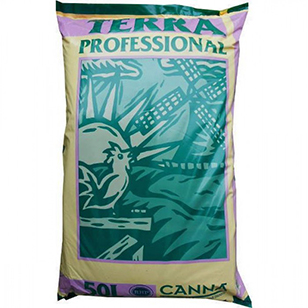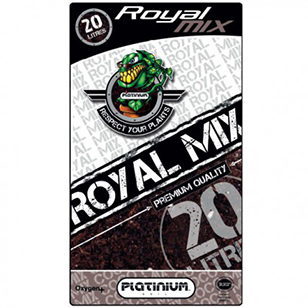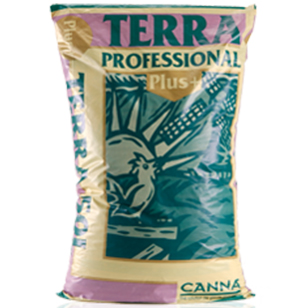Soil, the basic growing medium
Soil in indoor cultivation
Soil culture is chosen by 65% of the growers who opt for indoor culture.
Beginners will tend to choose indoor soil cultivation for its simplicity of use. Indeed, this practice reminds them of the culture of their gardens, the vegetable gardens of their grandmothers... so many useful and reassuring reference when one launches out in the unknown of the indoor culture. However, this practice is not only for beginners because growing in the ground has many advantages..
What are the advantages of growing in soil?
- Low cost of installation
- Easy and quick to use
- Different types of soil for different uses
- Ideal for use in organic farming
- Available everywhere (garden center, growshop, supermarket...)
Different soils according to your desires
Different brands such as Plagron, Platinium, Biobizz or even Canna offer you different products completely adapted for indoor cultivation. They are all studied so that the exchange between the soil and the root system is optimal.
Generally composed of peat and perlite, most potting soils have a pH between 5.5 and 6.5, ideal for indoor growing to give the best nutrient supply to your plant.
 Potting soils for germination and cuttings:
Potting soils for germination and cuttings:
The advantage of these potting soils is that they are very little fertilized, which makes it possible to add mineral fertilizers or organic fertilizers.
Depending on the potting soil chosen, it is generally not necessary to add fertilizer for the first three weeks of use. Then the grower can add liquid fertilizers in order to have control over his crop, but only root stimulators, mycorrhizae or growth stimulators.
Use in the germination or cuttings phase.
 |
 |
 |
 |
 |
|
from Biobizz |
from Plagron |
from Gold Label |
of Platinium Soil |
from Canna |
 Potting soils from growth to flowering - Light-Mix or Grow-Mix type:
Potting soils from growth to flowering - Light-Mix or Grow-Mix type:
Some brands offer fertilized potting soils. The soil is then ready to use, already loaded with organic and mineral fertilizers. The plant will be able to feed itself during the first three weeks of use, without any control or addition from the grower.
If the grower decides to add liquid fertilizers, there is a risk of over fertilization which can be fatal for the plant, so it is necessary to know the crop and its characteristics before adding fertilizer.
After the first three weeks of use, the grower can use organic fertilizers designed for growing in soil.
These soils can generally be reused.
Use of the Growth to Flowering.
 |
 |
 |
 |
 |
|
of Biobizz |
of Plagron |
of Gold Label |
of Platinium Soil |
from Canna |
 |
 |
|
from Plagron |
from Platinium Soil |
 Potting soils from growth to flowering - type Royal-Mix or Bat-Mix :
Potting soils from growth to flowering - type Royal-Mix or Bat-Mix :
Some potting soils are fertilized in such a way that they can be used throughout your indoor culture: from growth to flowering. Theoretically, nofertilizer is necessary with this type of soil, during the first 6 weeks of use, its components allow the soil to have all the necessary contributions to the good development of the plant until the 6th week of use included.
The grower can then decide to add fertilizers, but it is imperative to use special organic fertilizers for the soil.
Use from Growth to Flowering.
 |
 |
 |
 |
 |
|
of Biobizz |
of Plagron |
from Gold Label |
from Platinium Soil |
from Canna |
 |
 |
 |
|
|
from Plagron |
Père François vegetable garden from Or Brun |
from Bio Nova |
from Or Brun |
Culture Indoor's Soil Council:
Indoor Culture recommends that you choose a Light-Mix or Grow-Mix potting soil to allow you to use fertilizers in order to have total control over your crop. If you control your crop well, and choose the right fertilizers, the result of your harvest will be even better!
Good Plan Indoor Culture
Culture Indoor suggests you to use fertilizers 420 Organics in combination with a Light type of soil. Indeed, these powder fertilizers are to be used in amendmentif you want to use them as a fertilizer, you just have to water the plants with clear water after having spread the powder on the crop.
Find all our advice for your indoor culture:
- Indoor Growing Tips : Light
- Indoor Growing Tips: Air
- Growing tips for indoor plants: The Substrate
- Growing tips for indoor plants : Water and fertilizers
- Growing tips for indoor plants : Germination and cutting
- Growing tips for indoor plants : Growth
- Growing tips for indoor plants : Flowering
- Growing tips for indoor plants : The growing room
- Tips for indoor growing : Systems
- Growing tips for indoor plants : Water control
- Growing tips for indoor plants : Aquaponics
- Growing tips for indoor plants : Accessories


